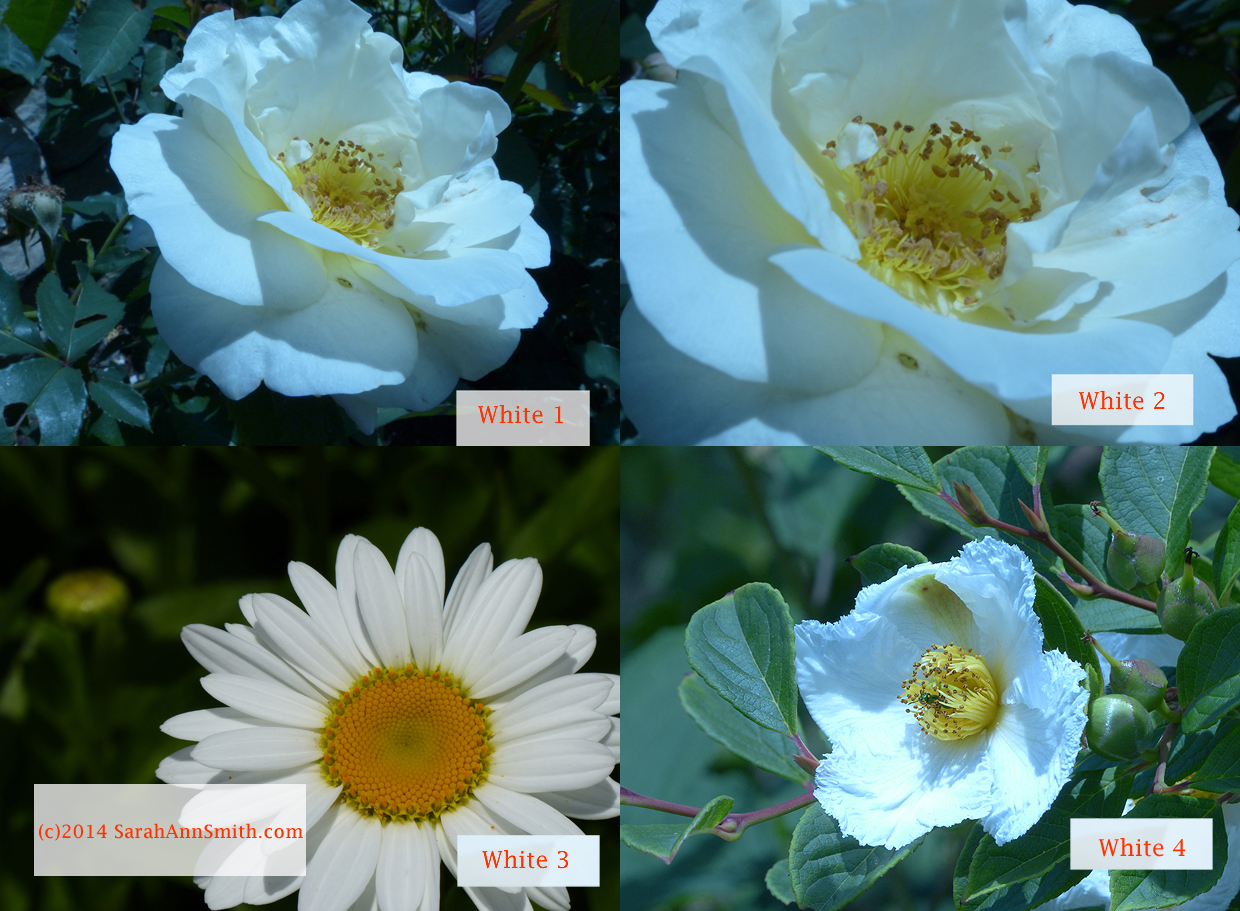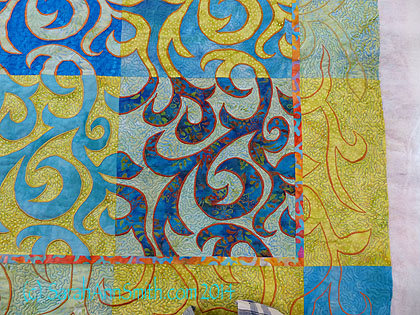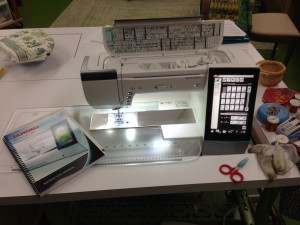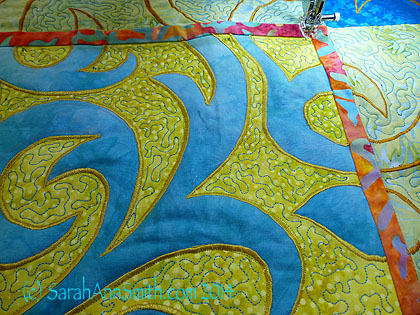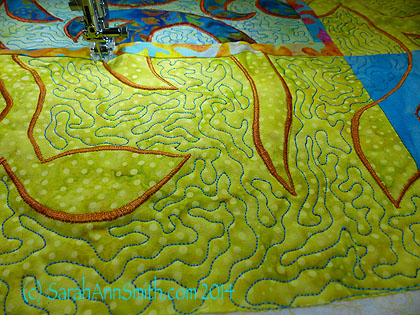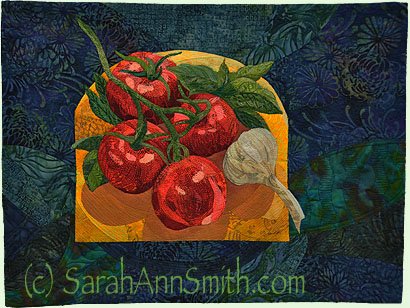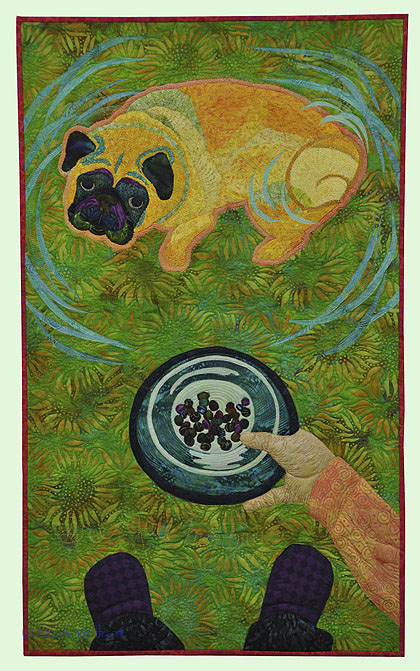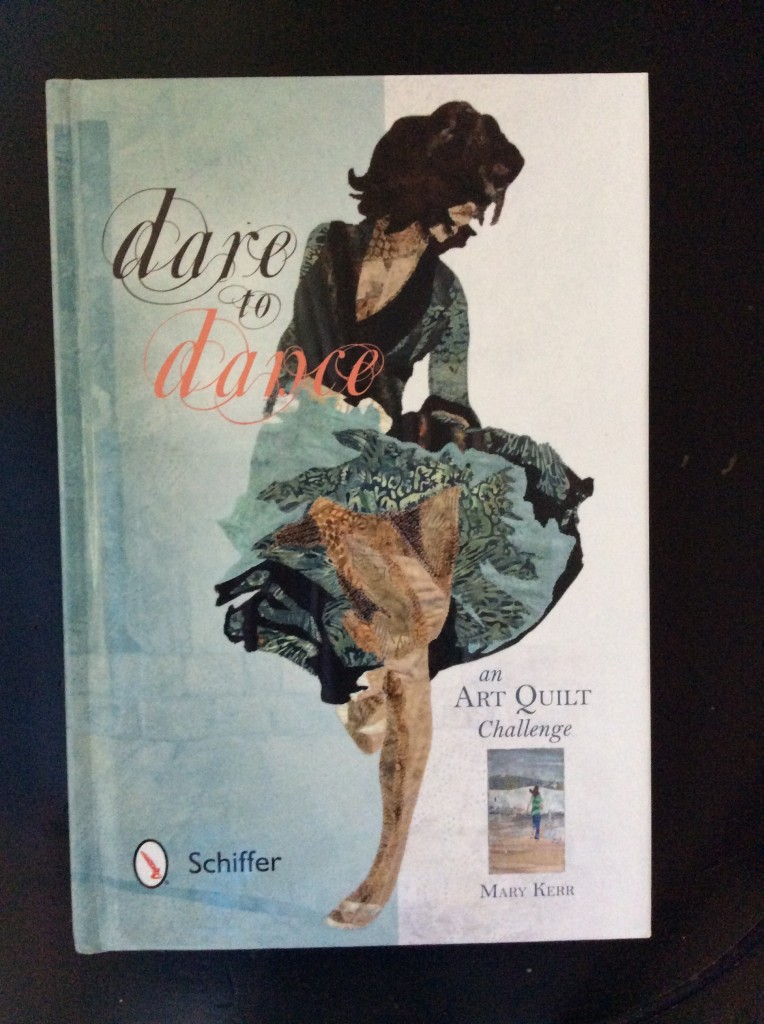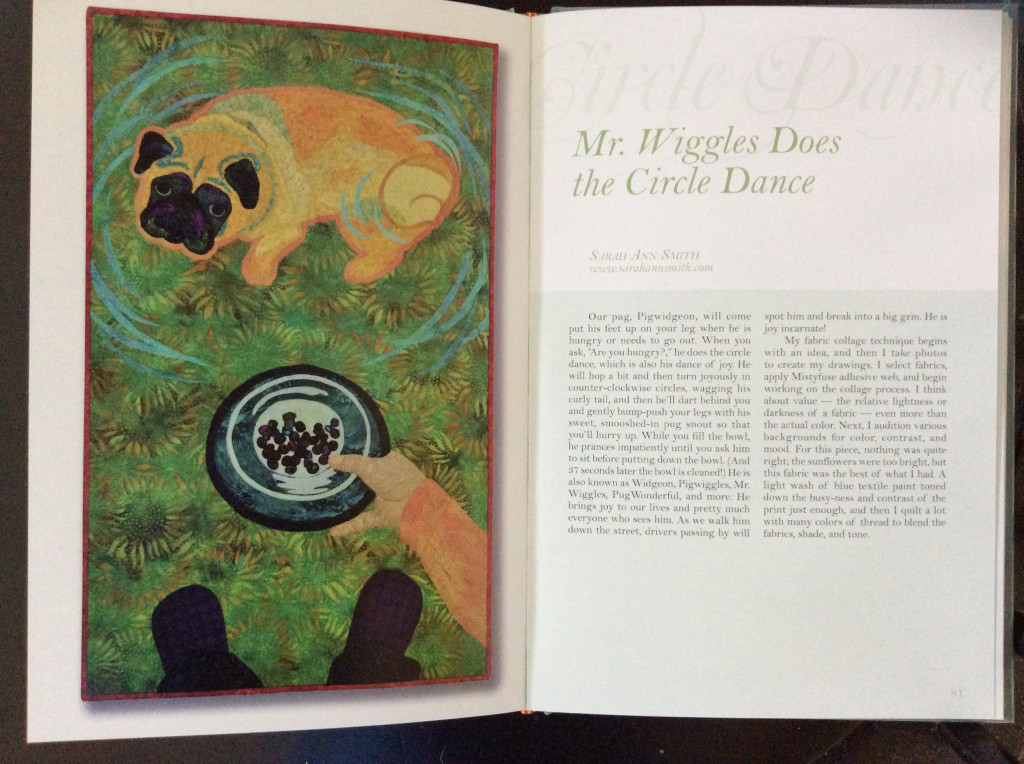Quilting the Garden Workshop and Giveaway
Friday, July 11th, 2014The Giveaway is now concluded. Any comments left after 12:13 pm today, July 19, will not be part of the drawing, but comments are still welcome! The winner is Phyllis Carlyle, comment #36 (picked by an online random number generator)! Congrats and THANK YOU to all!
Hey I need some advice! I’m putting together a new workshop and/or class called Quilting the Garden (part of my Quilting the Good Life series). I need your help picking which colors and flower images to use for the class. In thanks for your help, I’m offering a free copy of my Quilting Arts video workshop, Art Quilt Design from Photo to Threadwork (read all about it here), for someone who answers some of my questions here on my blog (not Facebook). I’ll choose a winner in a week’s time, on July 19th. (See last paragraph for The Fine Print.) Read on!
My questions for you, dear readers are these:
- What color flowers do you think the majority of students would pick, including you?
- Should I include the green-only hosta leaves?
- Which individual images would you most want to do in a class? Tell me your favorite three (use the names I have given to each such as Purple 2, Yellow 4, and so on).
- Would you want a complicated image as one of the options, such as Multi 1 below?
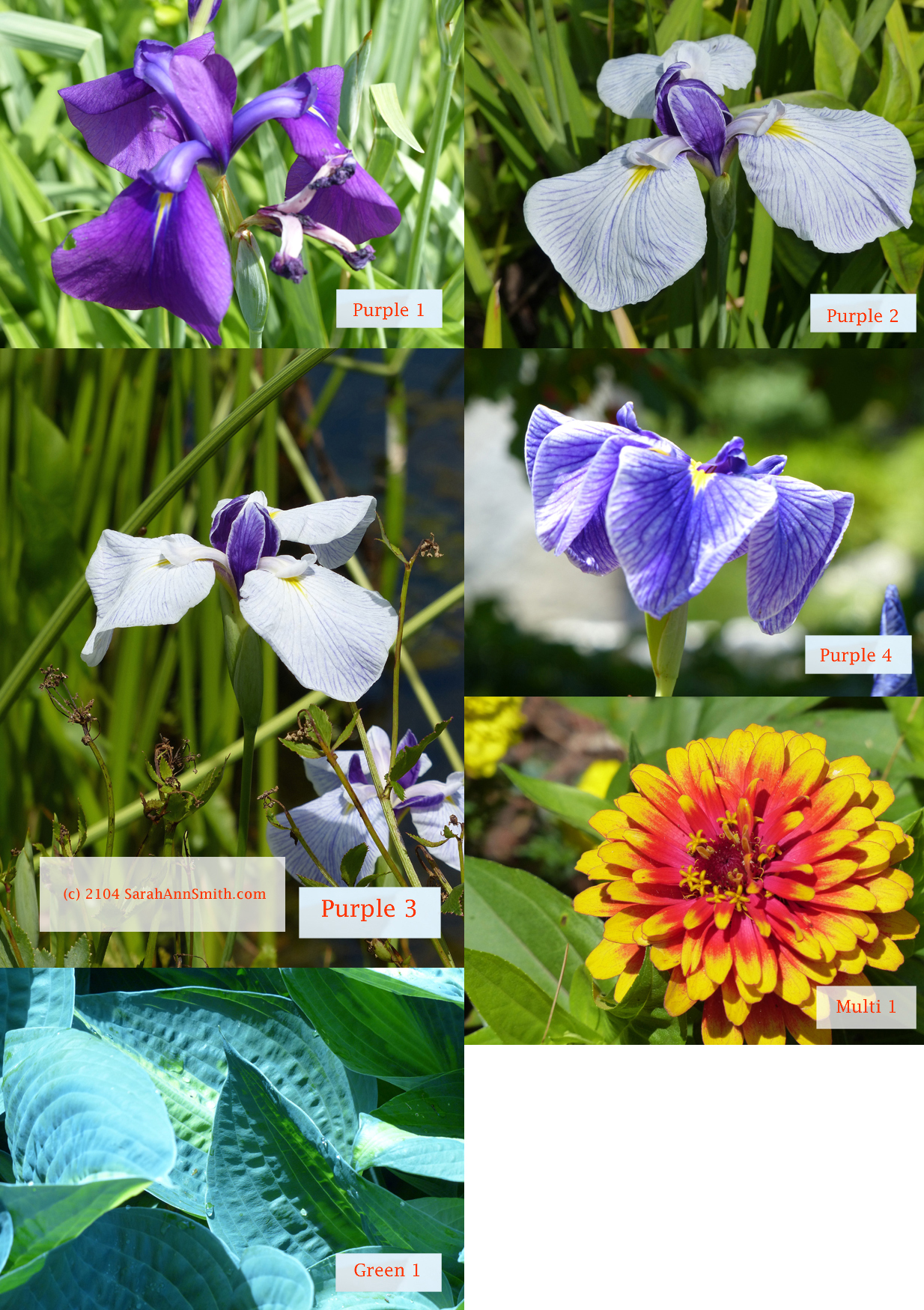
Purple, Multi and Green images: four purple or purple and white Iris, a zinnia and hosta leaves. Right Click on image to see it larger.
Some background information
Most students can either put together a top in a day class OR do some quilting in a day class, but not both. And most guilds and shows won’t book multi-day workshops because students tend not to sign up for them. I would dearly LOVE to teach 3-5 day workshops, but in the meantime I’m working on a one-day exercise which can be a standalone class also.
My solution to the “can’t do it all in a day” issue is this: I will provide a kit for a modest fee including a photograph printed on cloth (from Spoonflower, my photos, about 8×10 or 12×10 printed size, or a tad larger) plus an 8 1/2 x 11 color photo, page protector, and possibly several color photos–one of each of the three options offered in the class. The photos will come from the ones on this blogpost (or perhaps a different red, keep reading). And what size is good? is 8 x 10 too small, perhaps 10 x 12 or a bit bigger? Or as large as 17 x 21 (which of course costs more to print)?
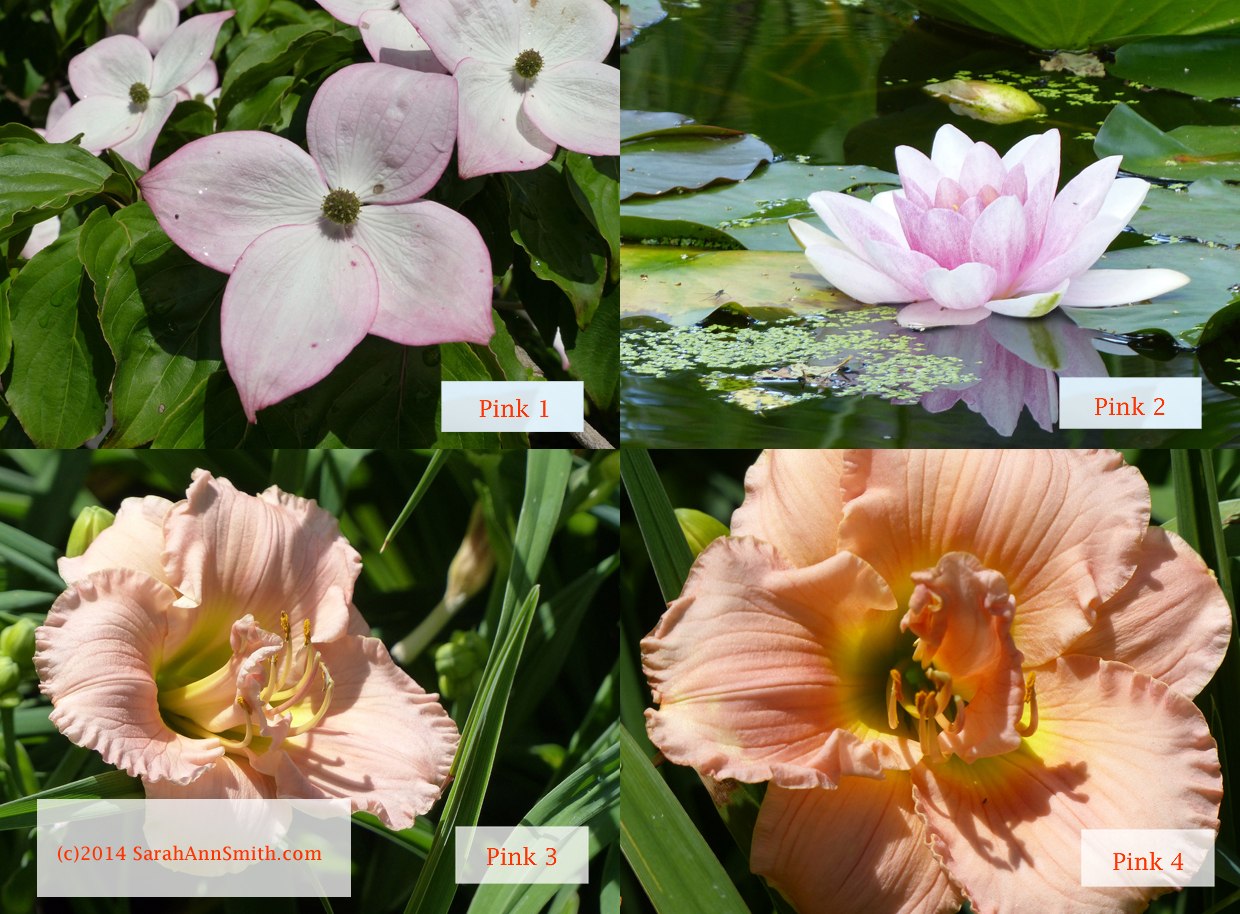
Pink Kousa Dogwood, Water Lily, apricot Lily, closer view of apricot colored Lily. Right Click on image to see it larger.
For the class I want a relatively uncomplicated image that will allow students to learn to use thread colors to shade and paint and color their artwork. By working on top of a photo, the imagery is provided. They can then use my collage process, taught in my DVD (info here), to create their own imagery in cloth rather than using a photograph. But they will, having taken this class, have learned the skill to interpret the photo into color and thread. A multi-color flower may be best, but not many fit that bill. The simplicity of a lily is perfect–only six petals! Too many petals make it more complicated. Would you want a complicated image as one of the options? Or should I keep all the images relatively simple?
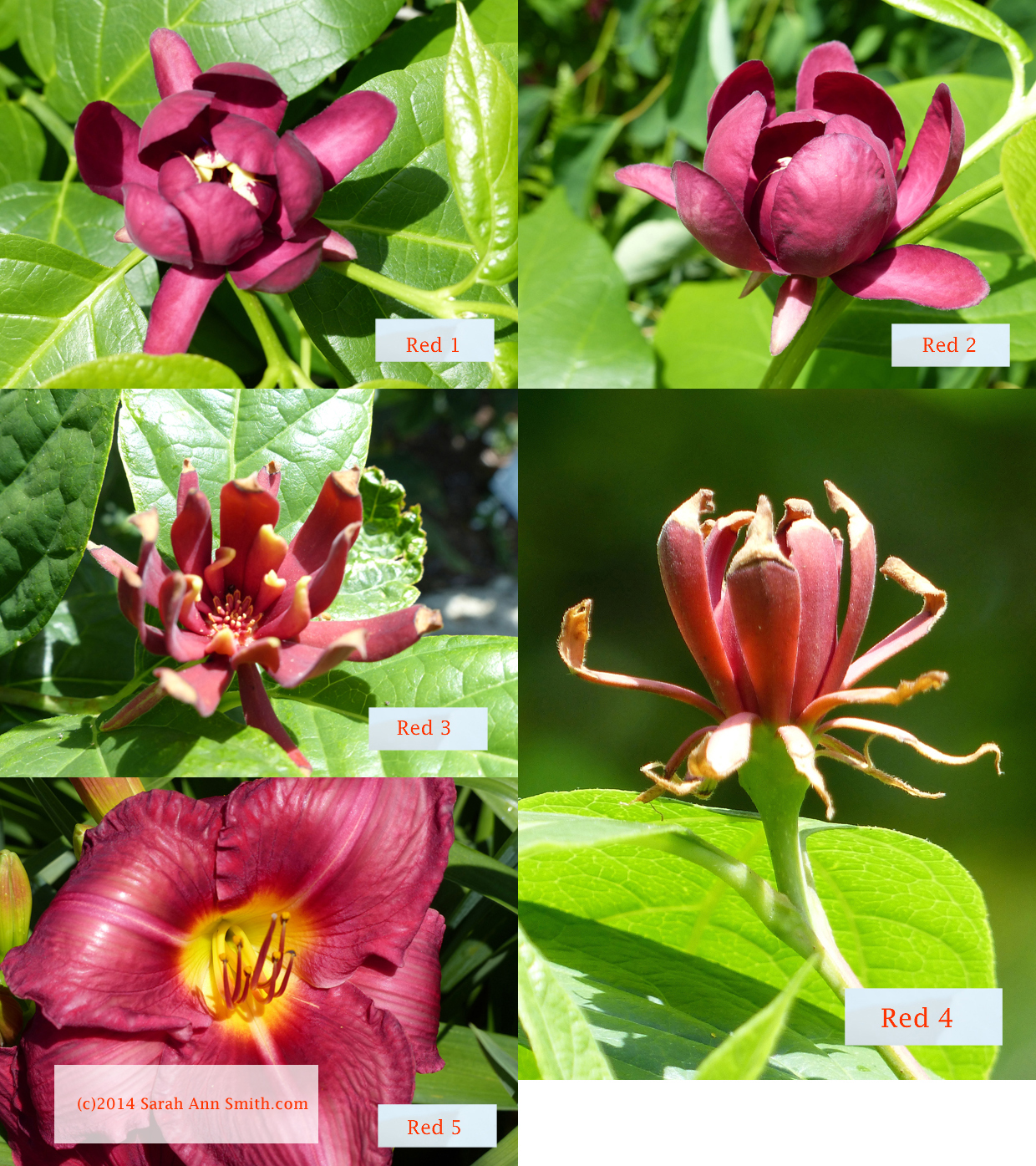
Reds, alas I don’t know the names of these glorious flowers (sending email to the Botanical Gardens horticulturalist). Should I find a different truly RED flower, as these are burgundy and ladies who love red want REALLY red? Right Click on image to see it larger.
In the red collage, photos 3 and 4 are intriguing, but probably not the best for this exercise, but I couldn’t resist including them.
I’m also thinking that white flowers are not the best choice, but would like feedback.
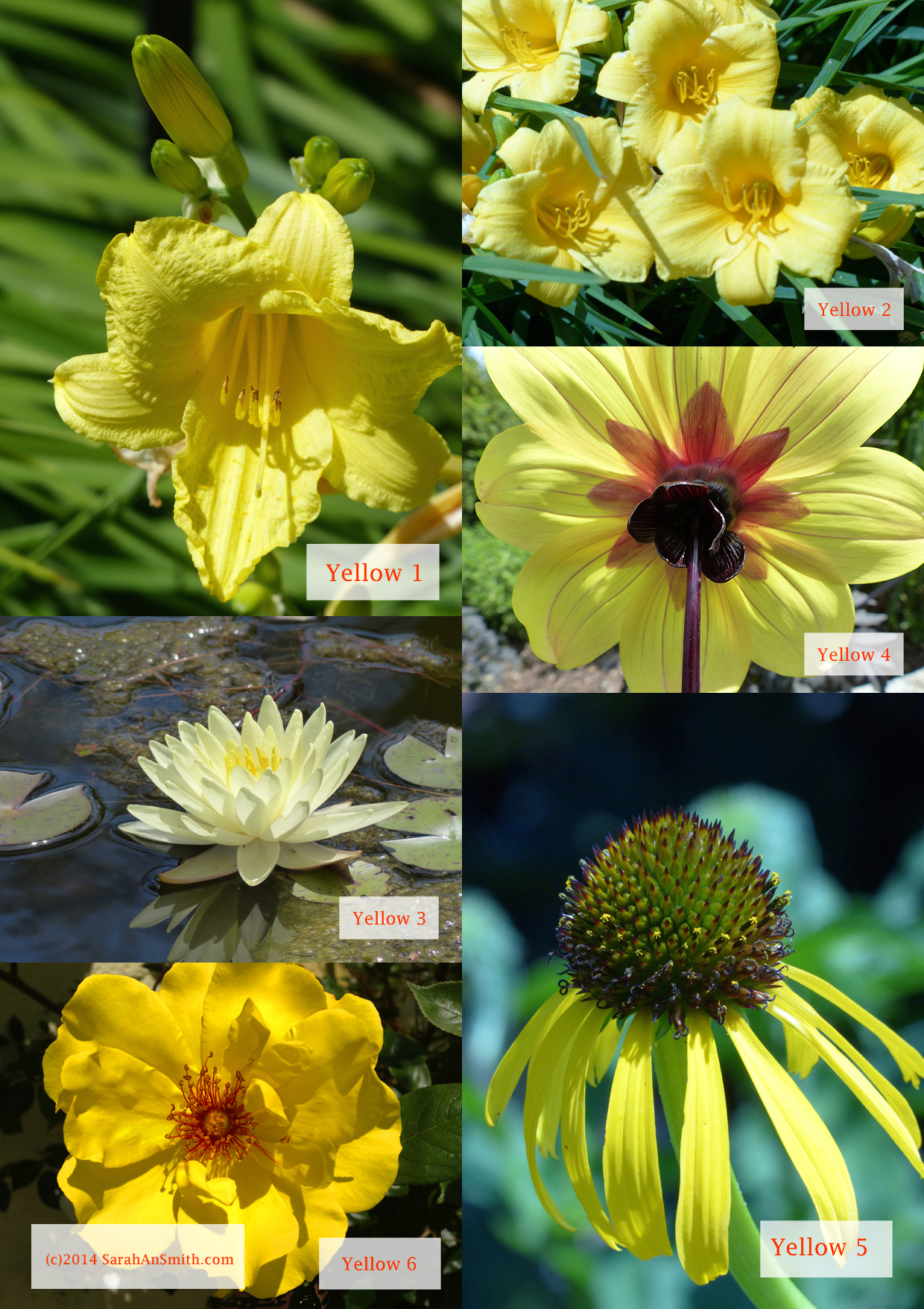
Lots of yellows that I love. The solution to the white question might be to choose the cream lily above. The yellow rose will be one of my sample flowers–I’m working on another project for an article that involves this sample, so students may want to try this one. The coneflower photo may be too complicated for a classroom, especially the cone. Right click on the collage for a larger view.
And:

A selection of popular flowers, but the owner of the local gallery that has sold my work tells me orange doesn’t sell, people don’t like orange. What do you think? I think the lily would be a fabulous one for the purposes of the exercise, but….Right click on collage to view larger.
And there is the question of thread:
I use and teach using 40-wt poly thread, which shows up beautifully. But some people prefer cotton, only cotton. If students do not pre-order the photo, they won’t know what color they will get in class. That means they would need to bring a LOT of thread: for the orange lily above, for example, if at home I would use at least 3-4 shades of orange (pale to rust), yellow, yellow-green, and the background greens. Is it better to kit the thread with the photo? Or allow students to bring their own, but perhaps be frustrated because they don’t have the right colors? Me taking a thousand spools of various colors without requiring a purchase is, alas, not an option because I can’t afford to have so much money tied up in inventory. So, what would you prefer from a class/teacher?
So tell me what you think:
- What color flowers do you think the majority of students would pick, including you?
- Should I include the green-only hosta leaves?
- What is a comfortable size for you? Is 8×10 too small?
- Which individual images would you most want to do in a class? Tell me your favorite three (use the names I have given to each such as Purple 2, Yellow 4, and so on).
- Would you want a complicated image as one of the options? Or should I keep all the images relatively simple?
- Should I include a thread as part of the kit? Each one would probably need at least four shades of thread at $6-8 per spool of Superior 40-wt polyester plus a pre-wound bobbin of blending fine thread, so that would be an additional $25-33 on top of a kit fee for the fabric and color photocopies of about $10-12.
If this class is a go, I will offer at most three flower options. IF students register for the class 2 months in advance, they may write to me directly with their choice of flower and I will make sure they get their first choice for the workshop. It takes that much time for me to order the fabric, have it printed, and shipped back to me and be ready in time for the class. The remaining students would have to pick a color from what is available at the class. That means they’d need to bring thread for multiple colors (at least four shades of each colors) if thread is not part of the kit.
THANKS!
The Fine Print:
- Remember to comment by 8 a.m. Saturday, July 19th (US East Coast Time) for a chance at winning my DVD in thanks for your taking the time to read, think, and comment here on my blog!
- If you are outside of the US, you may comment but I’d appreciate a little help with the postage–I’ll pay up to $5 in postage.
- Comments must be here on my blog, not a feed reader or facebook!
- Comments like “gee I’d love to win the DVD” won’t work–I’m really looking for feedback on the images and questions I asked.

